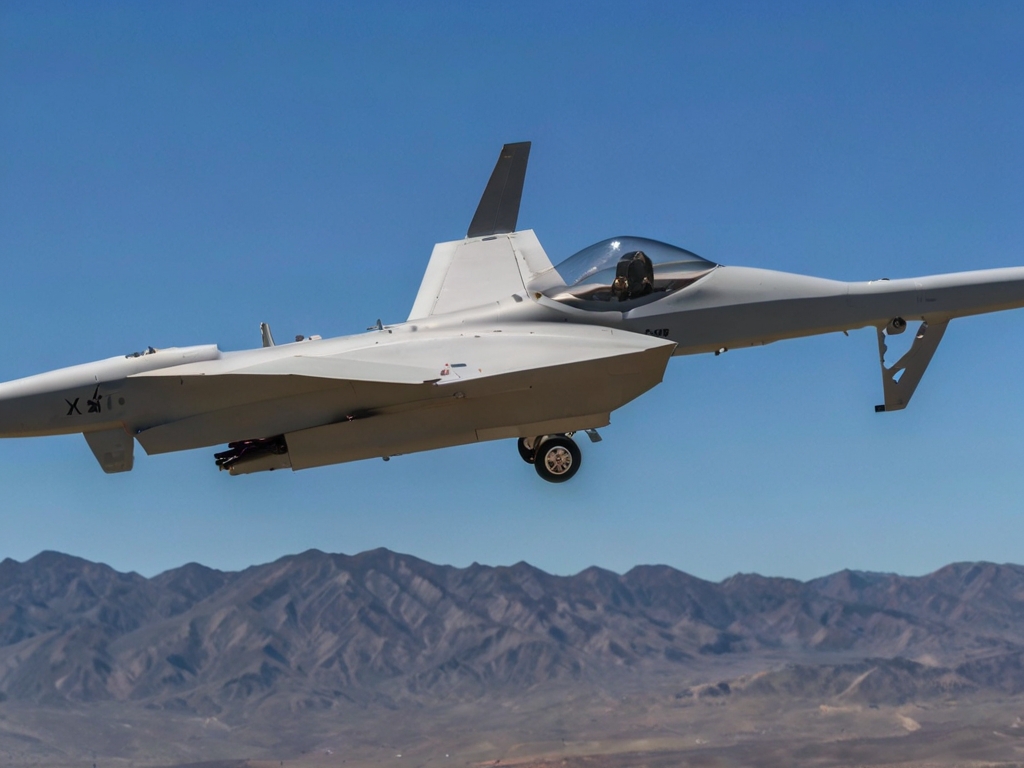In a bid to enhance its aerial combat capabilities, the US Air Force is set to introduce a fleet of 1,000 AI-controlled drones, marking a significant shift in military strategy. These unmanned aerial vehicles (UAVs) will operate under the Collaborative Combat Aircraft (CCA) program, utilizing artificial intelligence (AI) to function in tandem with manned combat aircraft.
New AI-enhanced fleet enhances combat capabilities
The US Air Force’s decision to deploy AI-controlled drones comes in response to the evolving battlefield dynamics, notably seen in Ukraine, where UAVs have emerged as pivotal force multipliers. With the success of unmanned aircraft in augmenting operational efficiency and tactical flexibility, the Pentagon is keen on leveraging AI technology to bolster its air superiority further.
Strategic impetus behind the CCA program
Initiated in the early 2000s, the Collaborative Combat Aircraft program aims to integrate AI-driven drones into the existing fleet of manned combat aircraft. These AI-equipped drones will serve as “wingmen,” supplementing, protecting, and supporting conventional fighters like the F-35. The envisaged fleet of unmanned aircraft, capable of executing diverse operational tasks, including reconnaissance and engaging air and ground targets, is anticipated to offer cost-effective alternatives to traditional fighter jets.
Key features and implications of AI-controlled drones
The AI-controlled drones are engineered to replicate the functionalities of manned aircraft while offering significant cost savings with an estimated production cost of around one-third that of a comparable fighter jet. These drones promise to alleviate budgetary pressures and streamline pilot training expenses. Notably, the program’s first phase is projected to incur approximately $6 billion, reflecting the scale and ambition of the endeavor.
Prospective contractors and technological advancements
Several prominent defense contractors, including Anduril Industries, Boeing, and General Atomics, have already unveiled prototypes of their AI-enabled drone proposals. These contenders are vying for lucrative Defense Department contracts, showcasing advancements in human-machine pairing technology and AI integration. Concurrently, industry giants like Lockheed Martin and Northrop Grumman are actively engaged in refining their offerings, underscoring the competitive landscape within the defense sector.
Operational and logistical considerations
As the US Air Force progresses with the deployment of AI-controlled drones, attention is directed towards addressing various operational and logistical challenges. Critical factors such as payload capability, infrastructure requirements, and unit organization are being meticulously evaluated to ensure seamless integration and optimal utilization of the new fleet. Additionally, tactical methodologies and squadron configurations are subject to scrutiny, with the aim of enhancing efficiency and effectiveness in combat scenarios.
Outlook and future implications
The introduction of AI-controlled drones heralds a paradigm shift in aerial warfare, combining technological innovation with strategic agility. If successful, the Collaborative Combat Aircraft program promises to redefine the dynamics of military engagements, offering a potent blend of lethality and adaptability. Moreover, these drones are positioned not merely as fleet additions but as potential lifesaving assets, embodying a new era in defense capabilities.
With the impending rollout of 1,000 AI-controlled drones, the US Air Force is poised to elevate its combat prowess to unprecedented heights. As advancements in AI technology continue to reshape military strategies, the Collaborative Combat Aircraft program underscores a commitment to innovation and readiness in an ever-evolving security landscape. As stakeholders navigate the complexities of implementation and deployment, the trajectory of aerial warfare stands poised for transformation, marking a watershed moment in defense capabilities.





